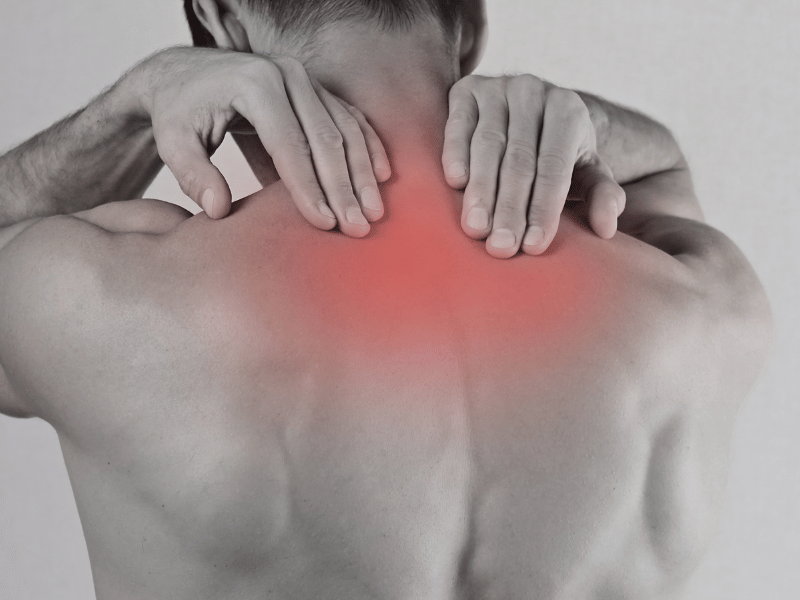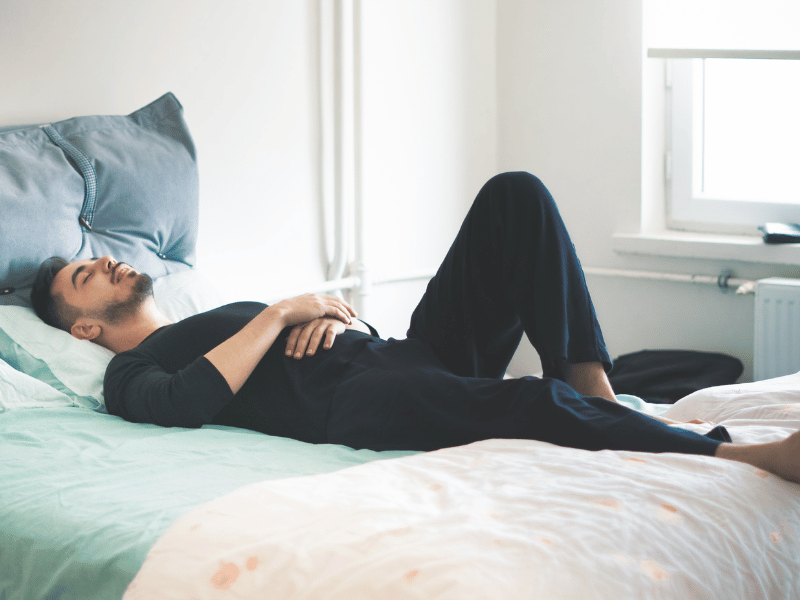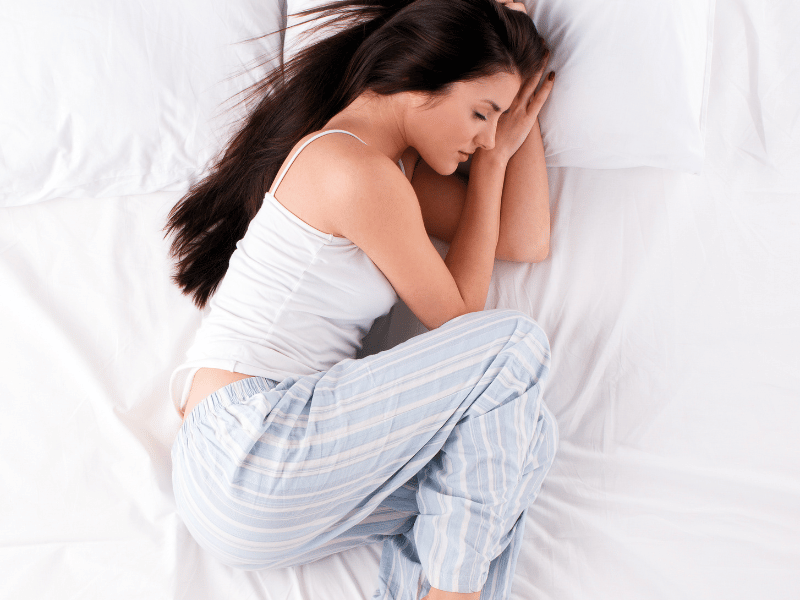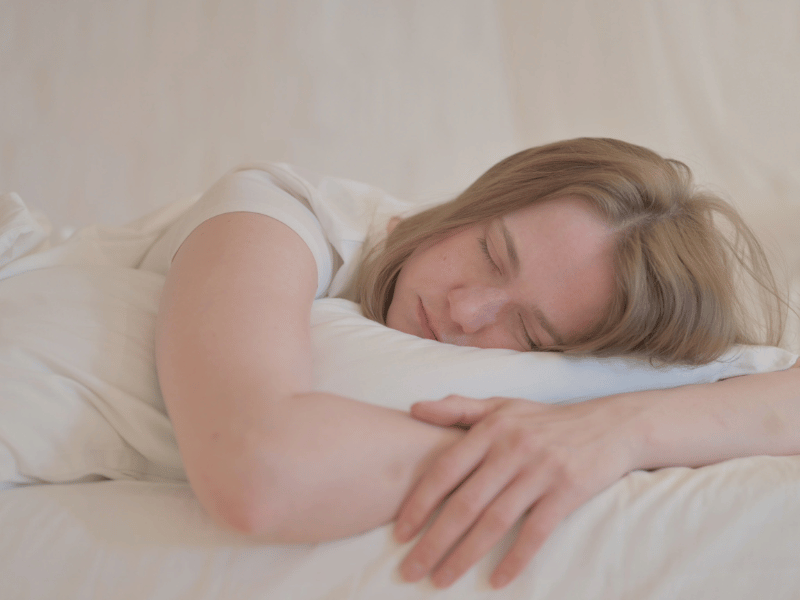


Dealing with back pain can be rather exhausting. Imagine having every movement that you make, end up with pain. This can cause frequent sleep disruptions, leading to poor sleep. If you want to know how to sleep with upper back pain, keep reading to find out more.
This article will explore the best sleep positions to alleviate the discomfort and some other considerations to improve your overall back condition.

While upper back pain is generally less common compared to lower back pain, it still brings a great sense of discomfort and pain. Several reasons may explain why you are experiencing upper back pain with the most common cause being poor posture.
Poor posture can cause the spine muscles to weaken, leading to structural changes. For example, slouching in a chair at work. This is a common habit that can increase the likelihood of muscle strains.
Besides poor posture, other reasons include having herniated discs, osteoarthritis, compression fractures, scoliosis, and myofascial pain syndrome (MPS), muscle overuse [1].
One way to alleviate upper back pain and get a restful night’s sleep is through having a good sleep posture. Here are some of the best sleeping positions if you’re looking to relieve your upper back pain:

Sleeping on your back helps to keep the spine straight in a neutral position. If you decide to sleep on your back, placing a pillow underneath the head, neck or knees can help to provide additional support to the back and maintain the natural curve of your lower back.
However, one downside to sleeping on your back is that it can increase the risk of snoring. It may not be suitable for those with sleep apnea as the tongue may fall back, causing the breathing tube to be blocked. It is also not ideal for pregnant women as the pressure may affect the blood circulation to your baby [2].

The fetal position is a sleeping position whereby a person sleeps on their side with their legs tucked close to the chest. Lying in this position is ideal for those with herniated disc or spinal stenosis as it helps to open the space between the vertebrae, relieving pain.
For those who choose to lie in this position, you may want to consider using a pillow and placing it in between the knees to relieve additional pressure on the spine. Otherwise, you can consider lying on your side with your legs straight as well.

Generally, sleeping on the stomach is not a good sleeping position for those trying to relieve back pain. It may cause further strain on the back and neck. However, this position may be beneficial for those with a degenerative disc disease as it helps to relieve pressure on the spaces between discs. In addition, those who choose a stomach sleeping position should use a flat pillow to maintain a good spinal alignment.
If you have both upper back and neck pain, you may find sleeping on your back and on your side to be comfortable sleeping positions as they help to relieve pressure on your spine and maintain a neutral alignment.
Besides your sleeping position, there are also some other considerations that you might want to make, to help you relieve your upper back pain.
Are you wondering which pillow is best for relieving upper back pain and ensuring a comfortable night’s sleep? Selecting the ideal pillow can make a significant difference in reducing pain and promoting better sleep. Here are four key factors to consider when choosing the right pillow:
Personal Preference: Ultimately, choose a pillow that feels comfortable to you. Experiment with different pillow types and sizes to find the one that offers the best support and alleviates upper back ache for a restful night’s sleep.
Support: Look for a pillow that provides adequate support for your head, neck, and upper back. A pillow with medium firmness is often recommended to maintain proper alignment and reduce pressure on sensitive areas.
Size and Shape: Consider the size and shape of the pillow to ensure it fits your sleeping position. For example, a contoured pillow can provide added support for the neck and upper back, while a standard pillow may be suitable for other sleeping positions.
Material: Opt for a pillow made of high-quality, breathable materials such as memory foam or latex. These materials can help alleviate pressure points and provide optimal comfort.

When selecting the perfect mattress for pain relief, consider your sleep position, body type, and specific needs. Your mattress plays a crucial role in ensuring a good night’s sleep and alleviating back pain.
For sleep quality, it’s important to find a mattress that supports your spine and keeps it in a neutral position. If you sleep on your back, opt for a medium-firm mattress that maintains the natural curve of your spine while you sleep in this position.
If you prefer sleeping on your stomach, choose a firm mattress that prevents your abdomen from sinking in. Side sleepers should look for a mattress that provides enough cushioning to relieve pressure points.
To improve your sleep quality and alleviate pain in your back, incorporating exercise into your routine is crucial. Regular physical activity can help strengthen your muscles, improve flexibility, and reduce chronic pain. Here are four ways exercise can help relieve back and shoulder pain and help you find a comfortable position:
1. Strengthening exercises: Engage in exercises that target your back, shoulders, and core muscles. This can help improve posture and provide support for your spine.
2. Stretching exercises: Perform stretches that focus on your upper back, neck, and shoulder areas. This can help release tension and improve flexibility, making it easier to sleep in a comfortable position.
3. Aerobic exercises: Engage in activities such as walking, swimming, or cycling to increase blood flow and promote overall fitness. This can help reduce inflammation and alleviate back pain.
4. Relaxation exercises: Practice relaxation techniques such as yoga, meditation, or tai chi to promote relaxation and reduce stress. This can help improve sleep quality and reduce muscle tension.
Maintain a healthy weight to alleviate upper back pain by adopting healthy eating habits and engaging in regular physical activity. Excess weight can contribute to low bone mass and add pressure on weight-bearing joints, including the spine. By managing your weight, you can reduce the strain and stress on your upper back, leading to decreased pain and improved overall health.
To help you understand the importance of maintaining a healthy weight, here is a table outlining the relationship between weight and upper back ache:
| Weight Status | Impact on Upper Back Pain |
|---|---|
| Normal Weight | Less strain on the back |
| Overweight | Increased pressure on the back |
| Obesity | Significant strain on the back |
As you can see, being overweight or obese can put excessive pressure on your upper back, exacerbating pain and discomfort. By adopting a healthy diet and engaging in regular physical activity, you can achieve and maintain a healthy weight, reducing the burden on your upper back and promoting better sleep quality.
In conclusion, choosing the right sleeping position, pillow, and mattress, incorporating exercise into your routine, and maintaining a healthy weight can help you to relieve upper back pain so that you can achieve a good night’s sleep.
Complement your sleep with ShutEye® app today. ShutEye® is an advanced sleep-tracking app that monitors your sleep cycles and offers a personalized sleep solution to help you improve your sleep quality. Try it FREE for 7-days!
HealthHub (2021) 4 Ways to Get Comfortable While Sleeping During Pregnancy [online]. Available at: https://www.healthhub.sg/live-healthy/4-ways-to-get-comfortable-while-sleeping
National Spine Health Foundation (2021) The Most Common Causes Behind Upper Back Pain [online]. Available at: https://spinehealth.org/article/upper-back-pain/